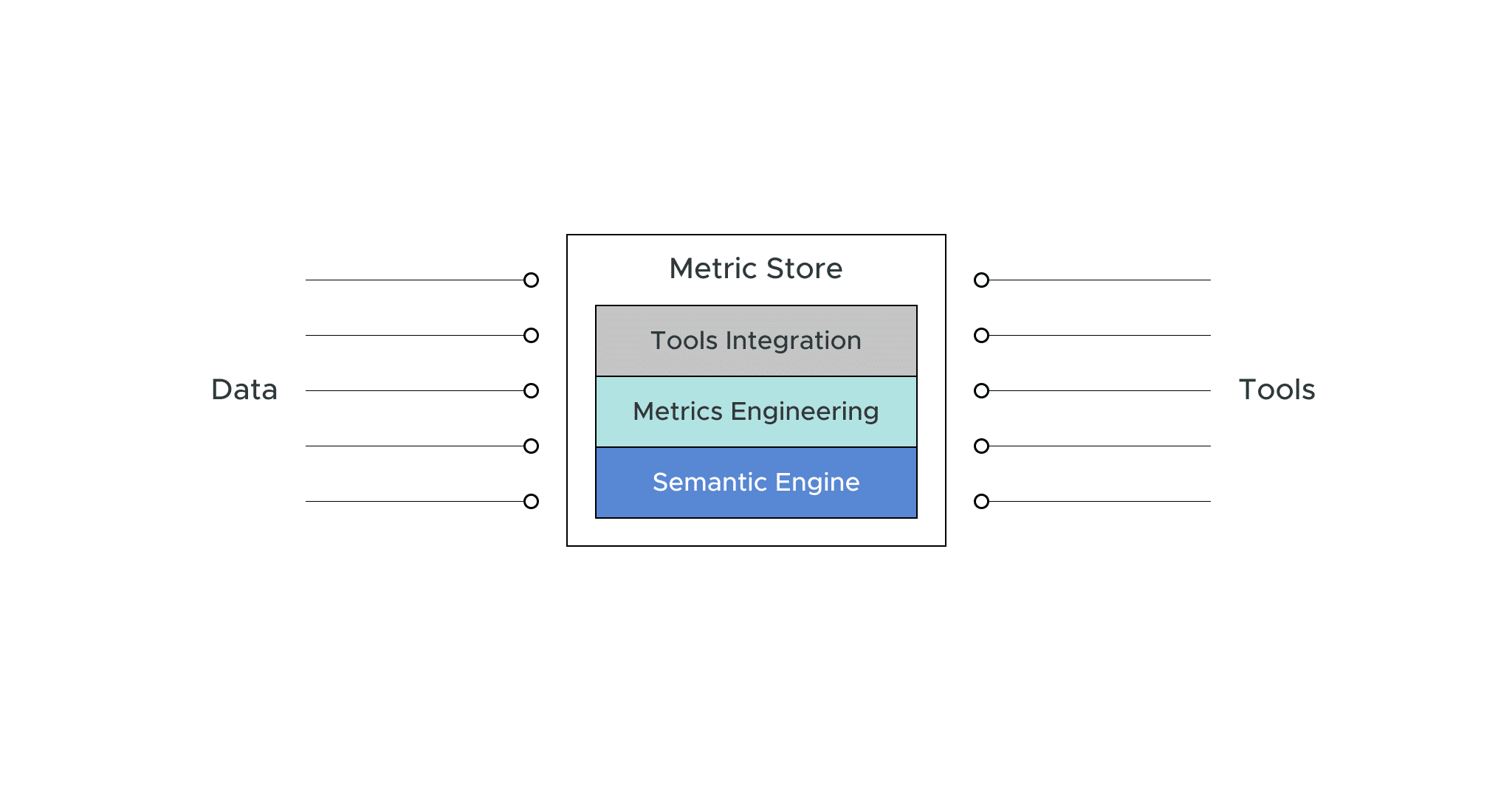April 13, 2023
Actionable Data Insights for Improved Business Results
This is a series of blog posts based on AtScale TechShorts – an interactive video series to build a foundational understanding of the core building blocks of the universal semantic layer in the modern data stack. You can read the first post in the series, The Semantic Layer and its Role in the Modern Data Stack, here.
In the second post of our series, we delve into a critical component of the modern data stack’s semantic layer platform – the Metric Store, which is one of the four key services alongside Data Modeling, Resource Orchestration, Governance, and Metadata Integration. While the terms “semantic layer” and “metric store” are often used interchangeably, it’s essential to clarify that a Metric Store is just one of these integral services within this platform. So, let’s begin by answering the fundamental question:
What exactly is a Metric Store?
At its core, a Metric Store serves as a repository for the definitions of metrics and dimensions used in an organization’s analytics, AI-generated insights, and reporting endeavors. Despite its name, a Metric Store isn’t limited to metrics alone; it should also house the definitions of dimensions, such as date and time logic or customer and product definitions, alongside their associated analysis hierarchies and drill-down capabilities.
The true value of a Metric Store lies in its ability to provide a centralized hub where all Business Intelligence (BI), AI, and analysis tools within an organization can access these definitions. This ensures that all teams, regardless of the BI or analytics tools they use, are working with consistent definitions. Centralizing metric definitions in this manner not only guarantees consistency but also allows for effective governance. Any necessary changes need to be made only once, in one place, and all reports, Machine Learning models, or dashboards referencing that metric automatically reflect the updated definition.
What are the criteria for a robust Metric Store?
- Seamless integration with all BI and AI tools: A Metric Store should seamlessly integrate with a wide range of analytics tools, ensuring accessibility from various platforms. This integration completes the “last mile” of analytics consumption, offering a single version of truth to all analytics consumers, regardless of their preferred tool.
- The best “translation” semantic engine: The Metric Store acts as a translator when users query data through their preferred applications. It receives user queries in various languages (such as MDX for Excel, DAX for Power BI, SQL for other dashboarding tools, or Python for data science tools) and translates them into the appropriate SQL queries for the backend cloud data warehouse. This translation capability is crucial for smooth data retrieval.
- Metrics Engineering: As organizations accumulate an increasing number of metrics, managing them becomes critical. Metrics engineering involves the strategic management of how metrics are defined, created, updated, viewed, and deleted. With the growth in the number of metrics, managing them programmatically, perhaps through Python scripts or a markup language, becomes essential.
This overview provides a glimpse into the world of Metric Stores within the modern data stack’s semantic layer platform. Armed with this knowledge, organizations can empower their users to harness governed insights, enabling them to utilize their preferred BI or AI tools effectively. It’s a pivotal step toward making data-informed decisions in today’s data-driven business landscape.
To learn more about the semantic layer in the modern data stack, watch the entire TechShorts video series.
ANALYST REPORT